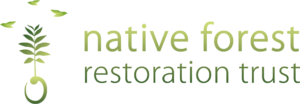The Facts
New Zealanders consistently rate our natural environment as being very important to them in any survey looking at people's values. NFRT's experience is that Kiwis are highly motivated to protect our wild places for a variety of reasons, not least of which is a concern about the impact humans are having on the world we live in.
Our impact on the environment
We all know New Zealand's environment is special. The story goes, having been isolated from the rest of the world for over 80 million years, our plants and animals had slowly evolved into unique forms, filling ecological niches in unusual ways.
When humans first arrived in Aotearoa around 1,000 years ago they found it inhabited by peculiar flightless birds, giant invertebrates and plants which had survived more or less unchanged since Gondwanan times. These unique creatures that had never seen humans before were easily hunted to extinction, and large parts of the ancient forests were felled.
As if the first 800 years (or so) of human presence weren't difficult enough for wildlife that had been left alone for millions of years, the 200 years since Europeans first settled here saw terrifyingly rapid changes.
Forest clearance; wetland drainage; extinction of native species through over-hunting; introduction of alien (non-native) species, both deliberate and accidental: these have all taken their toll on our natural environment. By the late 1800s some people were starting to realise the consequences of these changes to New Zealand's biota, but it wasn't until the 20th century that steps began to be taken to protect land with the primary aim of conservation of wildlife and habitats.
Why does it matter?
Many of our native plants and animals are endemic (they are only found in New Zealand) including over 80% of our plants, 90% of our insects, all our reptiles, and all our terrestrial mammals. This makes them particularly vulnerable to habitat loss. Already, more than 75 species have become extinct since humans first came to Aotearoa - that we know of.
We have a bias towards alpine and upland habitats in our public conservation land. Greed for the resources offered by our lowlands - agriculture, horticulture, plantation forestry and built development - has led to fragmentation of our indigenous lowland, wetland and coastal habitats. What few patches remain of these important and unique ecosystems have become isolated from one another, increasing their vulnerability. If one patch becomes damaged or is destroyed, many species cannot move across the intervening land to find another patch of their habitat, and so you get local extinctions, and sometimes species extinctions.
In addition to the effects on wildlife, our natural habitats provide "ecosystem services" that we are foolish to disrupt and ignore. Forests and wetlands are major carbon sinks, regulating our climate and producing the oxygen we breathe; forests stabilise soils; wetlands clean water and mitigate flood risk; our natural environment provides cultural and social benefits and is one of the major reasons tourists come to New Zealand.
Facts
Forests
Native forest covers approximately 6.4 million hectares of land in New Zealand, roughly 25% of total land area. This has reduced from estimated forest cover of 80% before humans arrived here.
With over 5 million hectares of our remaining forest existing on protected public land, we could be forgiven for being complacent about the conservation of our forests. However, most of the protected forest is of one or two main types, in upland areas.
New Zealand's lowland forests, particularly coastal/duneland and river margin/wetland forests, are under-represented in legally protected land.
- Only 2% of our original kahikatea forest is thought to remain, most of it in fragments on private land.
Wetlands
When people first arrived in Aotearoa, wetlands covered some 9% of the land area. Since then, around 90% of our wetlands have been destroyed through felling, burning, draining and filling. This trend is continuing even today:
- Over the 15 year period from 2001 to 2016, 13% of the total area of New Zealand's remaining wetlands was lost.
What is NFRT doing?
NFRT aims to restore damaged forest and wetland habitats and, where possible, increase the size of the habitat. We do this by active conservation management to control pests, encourage tree seedling establishment and planting native trees where appropriate. We purchase marginal farmland where there are remnants of existing natural habitat or where the pasture is adjacent to existing natural habitat and has not been substantially "improved" in an agricultural sense.
We protect the new reserve with Queen Elizabeth II covenants, and where possible create public access and interpretation for visitors' enjoyment and appreciation.
As well as protecting native wildlife, the process of securing, restoring and enlarging forests and wetlands creates an active carbon sink, contributing to the nation's efforts to create resilience towards climate change.
Since its inception in 1980, NFRT has secured over 7,000 hectares of reserves, including examples of rare habitat types and homes to endangered species. When we purchase land, we are competing in the open market; we would not be able to do this without the support of members of the public who donate funds. The fact that we have been able to secure so much land for the purposes of restoring native forest and wetlands, and protecting them forever, speaks volumes about the value ordinary New Zealanders place on their natural environment.
Today, over 30% of our total land area is legally protected conservation land. That seems a lot, until you look at the map and see that the vast majority of it is in mountainous or otherwise relatively inaccessible areas. In other words, not "productive" land. If you think about it in terms of a garden, it's easy to set aside the stony bit at the end of the section that's too hard to work and call it your wilderness area; but that doesn't make it an ideal refuge for the frog that lived in the swampy bit you drained, or a great home for the gecko whose tree you cut down.
Scenically, our public conservation land appears beautiful and unspoilt. In reality, our wildlife and habitats are struggling to cope with the devastating changes humans have wrought in the last 1,000 years or so.

